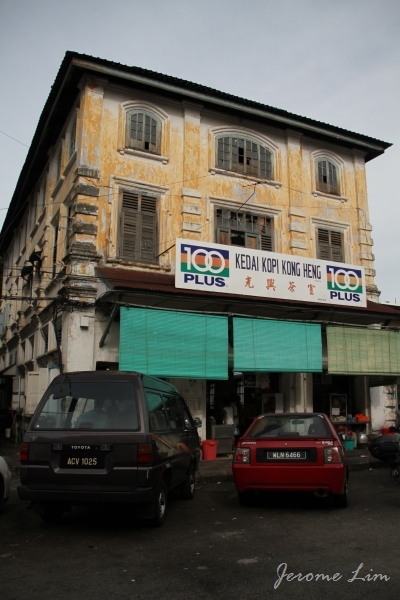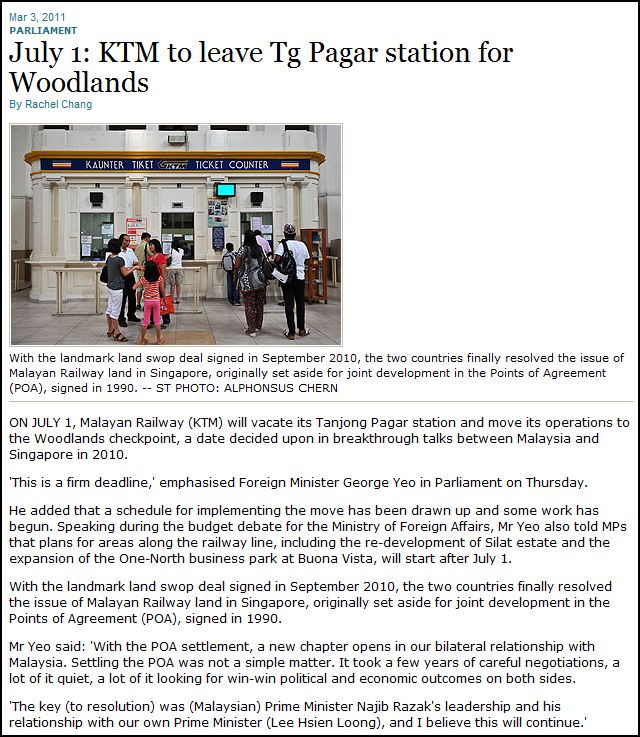One of the wonderful things about wandering around old towns in Malaysia is their ability to delight you with a few surprises from time to time. One such town (or city as it is now) is Ipoh, which I have passed through many times over the years without paying much attention to, which I had decided to spend a night at recently, motivated primarily by the desire to pay a visit to the grand old Railway Station building given to the city by one of the architects that Kuala Lumpur owes its rich architectural heritage to, with the bonus of the promise of the sumptuous treats that awaits the visitor to the city.

Motivated by the desire to have a look at the magnificent piece of railway architecture designed by A. B. Hubback, I decided to spend a bit more time in Ipoh than I normally would have thought of spending.
Ipoh had always been a town that I had not paid much attention to, often serving as a mere stopover on journeys to the north and the west of the town. It is a town that I have always associated with the tin mines that brought the town much of its status and wealth in the days gone by, one characterised by the many grand old buildings in the old town and the large bungalows along the approach into town that greet the visitor. My first ever visits there had been on an ambitious road trip my father took the family on in the early 1970s, when we had stopped first to pay a visit to the parents of his Brother-in-law who lived in Canning Garden on the way from Cameron Highlands to Penang, which I remember very little of except for sweltering in the mid day heat. We did also stop on the return trip – an unscheduled stop forced upon us by the temperature that I was running, to consult with a doctor and get some rest to recover before setting off for Kuala Lumpur.

Ipoh is named after the Ipoh, Epu or Upas Tree which was apparently abundant in and around Ipoh. This Ipoh Tree stands in the Town Square just in front of the Railway Station.
There were two other visits that I had made during my youth, both en route to Pulau Pangkor. One was notable more for the return coach journey on the Mara Express on which left passengers in a state that wasn’t far from a homonym of Mara in Malay. The other was when we had actually spent a few days – once again at Canning Garden where we stayed with the parents of a colleague of my mothers. That trip I remember most for being bored, mah-jong being the source of adult entertainment, thus leaving my sister and myself, the only juveniles stuck within the confines of the four walls and looking forward to the forays made into town for meals for which I remember the crunchy bean sprouts most and perhaps the sight of the old Cold Storage Supermarket which somehow caught my attention. It wasn’t some 25 years after that, at the beginning of 2008 when I had a short stint in Penang, that I visited Ipoh again, once again for a short stopover driven by curiosity of a place I had only vague memories of. On that and a subsequent stopover I made at the end of 2009, there wasn’t really much to change my impression of the town, which is in fact the administrative and commercial capital of the state of Perak, based on its reputation as being not much more than a sleepy hollow.

Ipoh, set against the backdrop of limestone hills has a reputation of being a sleepy hollow.
This time around, equipped with a little more time than I had given myself on my other recent visits, I was able to see a part of Ipoh that had previously escaped me. I was indeed surprised by its architectural heritage around a part of Ipoh that I had not previously known – seeing only in photographs the magnificent Railway Station and the beautiful building that is home to the sister institution to my own alma mater, St. Michael’s Institution.

Ipoh has some architectural masterpieces including St. Michael's Institution which was built over a period of 30 years from 1922, which is a sister institution to my alma mater in Singapore, St. Joseph's Institution.
After a early morning exploration of the beautiful Railway Station of which I would devote another post to, I was able to take a stroll around another of Arthur Benison Hubback’s masterpieces – the Town Hall, which has sadly fallen into a state of disrepair – although signs of restoration work around the rear of the building which was once the Post Office were evident. The Town Hall was built by the Public Works Department (as were the Government Buildings of that time) as part of an effort to provide Ipoh with public buildings that were “worthy of the town” in the early part of the 20th Century, the same effort which provided the Railway Station and the Town Square that separates the two magnificent edifices which were meant to provide, as the town planners had put, “a fine entry into the town“. Construction on the Town Hall and Post Office commenced in 1914 and after a delay due to the late arrival of materials from England, the building was completed in 1916. The Post Office moved in early 1917.

Ipoh Town Hall, which also housed the Post Office at the back of the building, was another building designed by A. B. Hubback.

A view of one of the wings of the Neo Classical styled Town Hall.

Inside the Town Hall.
Some of the other notable buildings in the vicinity that I was able to see on my stroll around the area just behind the Town Hall, bounded by Jalan Panglima Bukit Gantang Wahab (Club Road), Jalan Dewan (Post Office Road), Jalan Sultan Yussuf (Belfield Road), and the Padang are the High Court, built in Neo-Classical style and completed in 1928; the Straits Trading Building (now occupied by OCBC) built in 1907 in the Italian Renaissance style; the Chartered Bank Building built in 1924; the Art Deco styled Mercantile Bank (1931); the Perak Hydro Building (1930s) which housed the Perak River Hydro-Electric Power Company which supplied power to the tin mines around Ipoh; the Hong Kong and Shanghai Bank Building (1931), built in the Neo Renaissance style and was for a long time the tallest building in Ipoh until the post-independence era; and the building that housed the FMS Bar and Restaurant from 1923 – reputed to be the oldest restaurant in Malaysia which was started by a Hainanese immigrant and catered exclusively to European Miners and Plantation Owners. Along Jalan Tun Sambanthan (Hale Street) by the Padang, there is also a row of terrace town houses worth a look at which once was occupied by the practices and residences of legal professionals.

The High Court building is another notable building in Ipoh, just across from the Town Hall.

Another view of the High Court.

The Straits Trading Building (1907).

The Chartered Bank Building (1924).

The Mercantile Bank Building (1931).

The Perak Hydro Building (1930s).

The Hong Kong and Shanghai Bank Building (1931) which for a long time was the highest building in Ipoh.

The building that housed the FMS Bar and Restaurant, reputedly the oldest restaurant in Malaysia.



Across Jalan Tun Sambanthan from the Padang, are a row of pre-war town houses which housed the offices and residences of legal professionals.
So what does all this have to do with the concubine in the title of this post you may ask? Well, the stroll did certainly help in working up an appetite and in deciding to head to nearby Leech Street or what is now Jalan Bandar Timah where I was given to understand had some of the best “Sar Hor Fun” – flat rice noodles (commonly referred to as Kway Teow in our part of the world) of which Ipoh has reputedly the best (in terms of it being silky smooth), served with shredded steamed chicken and prawns in a clear chicken broth, in town, I stumbled upon another of the delightful surprises Ipoh held in store for me: Panglima Lane. Panglima Lane or Lorong Panglima is a narrow alleyway lined with two rows of two-storey pre-war houses that date back to the turn of the 20th Century. The lane had apparently been a hotbed of vice activity, home to gambling, prostitution and opium dens, which later became a residential area from which it got its name “Second Concubine Lane” being one of three streets where the Chinese wealthy had housed their concubines. Today, what greets the visitor are the crumbling and closely spaced units, some still occupied, and others, structurally unsound, lying abandoned. Signs of life are still very much in evidence around the occupied units – a well known restaurant occupies one of the units close to the main road beyond which the sight of laundry poles overhead, potted plants, opened doors and bicycles and tricycles greet the eye, along with evidence of the units that are slowly but surely falling apart. There are apparently plans to conserve and redevelop the houses along the lane, which I guess is something to look forward to, and something that has to be done before it all crumbles away.

A delightful find off Jalan Bandar Timah (Leech Street) is Lorong Panglima, a narrow street which is also known as "Concubine Lane".

Two rows of houses dating from the turn of the 20th Century line both sides of Concubine Lane, some showing signs of age and neglect. The lane was once a hotbed of vice activity and later became a residential area where rich Chinese men kept mistresses or concubines.

Another view of Concubine Lane. Some units still serve as residences, while some have been abandoned and left to crumble.

A tricycle outside a house in Concubine Lane.

More signs of life.

Windows on Concubine Lane.

A peek into one of the abandoned units on Concubine Lane.
As an added treat, I had my bowl of “Sar Hor Fun” in a coffee shop on the ground floor of a building on Leech Street that was built in the 1920s, as a hostel for performers at a Chinese Opera theatre that was just next door to it (since demolished). It was really a toss-up between the “Sar Hor Fun” stall next door at No. 73 which seemed more popular, and the one at No. 75 (Kong Heng Coffee Shop) where the so-called Dramatists’ Hostel was housed. I went for the one at No. 75 perhaps for the history of the building and wasn’t disappointed. The bowl of silky smooth noodles in the tasty chicken broth (which didn’t at all feel like it had been flavoured with MSG) was one of the best I have tasted. What struck me sitting in the coffee shop was that besides the bowl of noodles, people were also eating satay – which came from a well-known stall at neighbouring No. 73 – satay where I come from is usually only eaten only in the evenings. With the bowl of noodles finished, there was only one thing left to do … that was to sip on the steaming hot cup of Ipoh White Coffee, before heading back to the hotel for a rest.

The former "Dramatists' Hostel" along Leech Street once was home to performers of the Chinese Opera Theatre that stood next door (since demolished).

The ground floor of the former "Dramatists' Hostel" now houses the Kedai Kopi Kong Heng, at which I had a piping hot bowl of the well known Ipoh Sar Hor Fun.

A view from the window of the coffee shop.

The very satisfying bowl of "Sar Hor Fun" that I had.

The Sar Hor Fun stall at Kong Heng.































































































































































































































































































































































